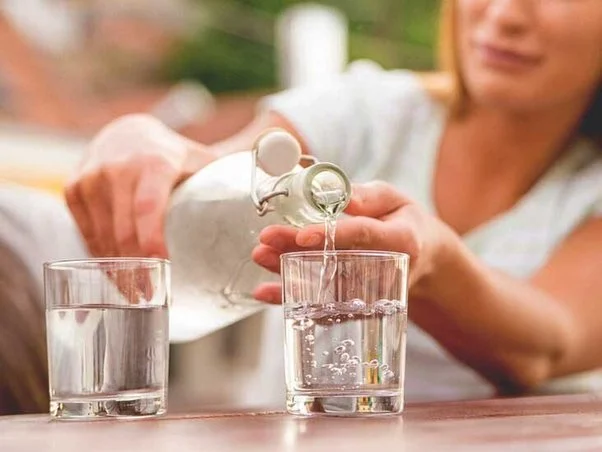2 liters is equal to 67.6 US fluid ounces.
To convert liters to ounces, you can use the following formula:

This formula is based on the fact that 1 liter is equal to 33.814 US fluid ounces. If you need to convert liters to imperial fluid ounces, 1 liter is equal to 35.195 imperial fluid ounces.
Liters to US fluid calculator
1. Introduction
Unit conversion is a fundamental concept that plays a vital role in various fields such as cooking, science, and everyday life1. It allows us to express measurements in different units, facilitating better understanding and communication. This article provides a detailed explanation of how to convert liters to ounces, specifically focusing on the conversion of 2 liters to ounces.
2. Understanding the Units
2.1 Liters
A liter (symbol: L) is a unit of volume that is accepted for use with the International System of Units (SI) but is technically not an SI unit. One liter is equal to 1 cubic decimeter (dm³), 1,000 cubic centimeters (cm³), or 1/1,000 cubic meters (m³). The liter is used to measure many liquid volumes as well as to label containers containing said liquids.
2.2 Ounces
A fluid ounce (symbol: fl oz) is a unit of volume in the imperial and United States customary systems of measurement. The US fluid ounce is 1/16 of a US fluid pint, and 1/128 of a US liquid gallon, which is equal to 29.57 mL. The fluid ounce is typically used as a measurement of liquid volume, mostly used in the United States and the United Kingdom.
3. Conversion Factor
The conversion factor between liters and ounces is crucial for the conversion process. It is a fact that 1 liter is approximately equal to 33.814 ounces.
4. Conversion Process
To convert 2 liters to ounces, we multiply the number of liters by the conversion factor. Here’s the step-by-step process:
- Identify the number of liters to be converted (in this case, 2 liters).
- Multiply the number of liters by the conversion factor (33.814).
Using these steps, the calculation becomes:
2 liters×33.814 ounces/liter≈67.628 ounces
Therefore, 2 liters is approximately equal to 67.628 ounces.
Real-World Examples of Converting Liters to Ounces and Vice Versa
1. Cooking and Baking
In the culinary world, recipes often use different units of measurement. A recipe from Europe might measure liquids in liters, while a recipe from the United States might use ounces. For example, if a European recipe calls for 2 liters of broth, and you only have a measuring cup marked in ounces, you would need to convert liters to ounces. Conversely, if an American recipe requires 20 ounces of milk, and your measuring jug is marked in liters, you would need to convert ounces to liters.
2. Beverage Containers
Beverage containers often list their volume in different units depending on the country of sale. In the United States, a soda bottle might be labeled as holding 20 fluid ounces, while in Europe, the same bottle would be marked as containing approximately 0.591 liters. If you’re used to thinking in one unit and the bottle uses the other, you might need to convert to understand the volume.
3. Scientific Experiments
In scientific experiments, precise measurements are crucial. Depending on the experiment, measurements might be given in either liters or ounces. For example, a chemistry experiment might require adding 2 liters of a certain liquid to a solution. If the lab equipment measures in ounces, the scientist would need to convert liters to ounces. Similarly, a biology experiment might require 20 ounces of a liquid, and if the equipment measures in liters, the biologist would need to convert ounces to liters.
4. Medical Dosages
In healthcare, medication dosages can be prescribed in various units. For instance, a cough syrup might be prescribed in fluid ounces in the United States, but in liters in Europe. If a patient or healthcare provider needs to convert the dosage to a unit they are more familiar with, they would need to convert ounces to liters or vice versa.
How Conversion Helps in These Situations
Unit conversion is essential in these situations for accuracy and understanding. It ensures that the correct amount of an ingredient, liquid, medication, or chemical is used, which can be critical for the success of a recipe, experiment, or treatment. It also helps people understand quantities in units they are familiar with, making it easier for them to visualize or measure the amount. Without the ability to convert units, we could face misunderstandings, mistakes, and even dangerous situations in fields like medicine and science.
6. Conclusion
Unit conversion, such as converting liters to ounces, plays a significant role in ensuring accuracy and consistency in measurements across different fields. The conversion factor between liters and ounces is approximately 33.814, and using this factor, we found that 2 liters is approximately equal to 67.628 ounces. Understanding such conversions can be incredibly useful in various real-world situations, from cooking to scientific research.

